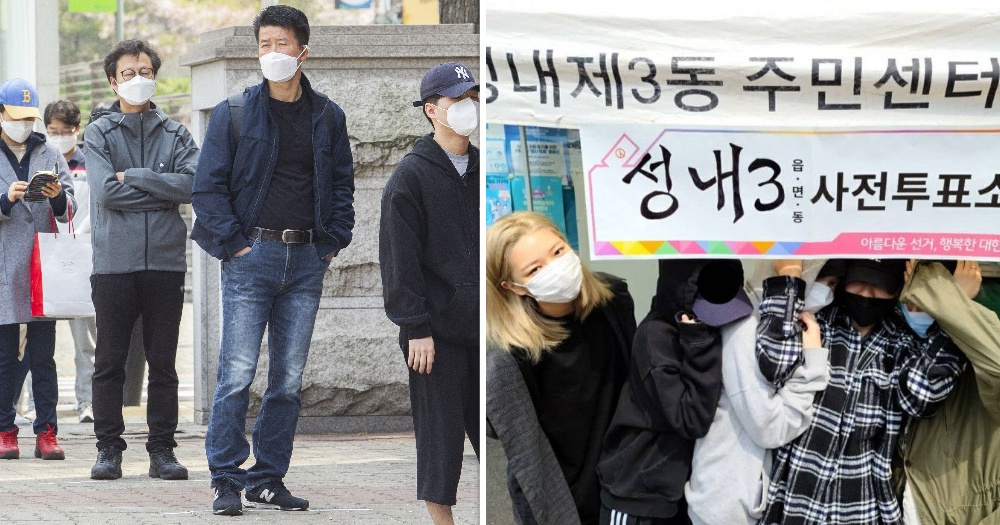Last week, South Korea achieved several historic feats.
In the middle of a global pandemic, their nationwide election on April 15 saw a sweeping victory for the ruling party, and the largest voter turnout in 28 years.
Lauded by international media for achieving astounding success, South Korea's electoral process is being held as a shining example for nations going to the polls.
Here's a summary of how they pulled it off.
Coronavirus Campaigning
Previously, South Korean general elections were an entertaining period for the electorate.
Political candidates would don brightly coloured uniforms, ride atop trucks blasting their rally speeches, and dance to K-pop style campaign tunes.

But as social distancing measures this year resulted in restrictions on handshakes, face-to-face interactions and footfall. Political candidates had to get creative to reach their public.
Thus, many party uniforms included masks and gloves branded with the candidate's initials, serving the dual purposes of protecting against the virus and increasing a candidate's visibility.
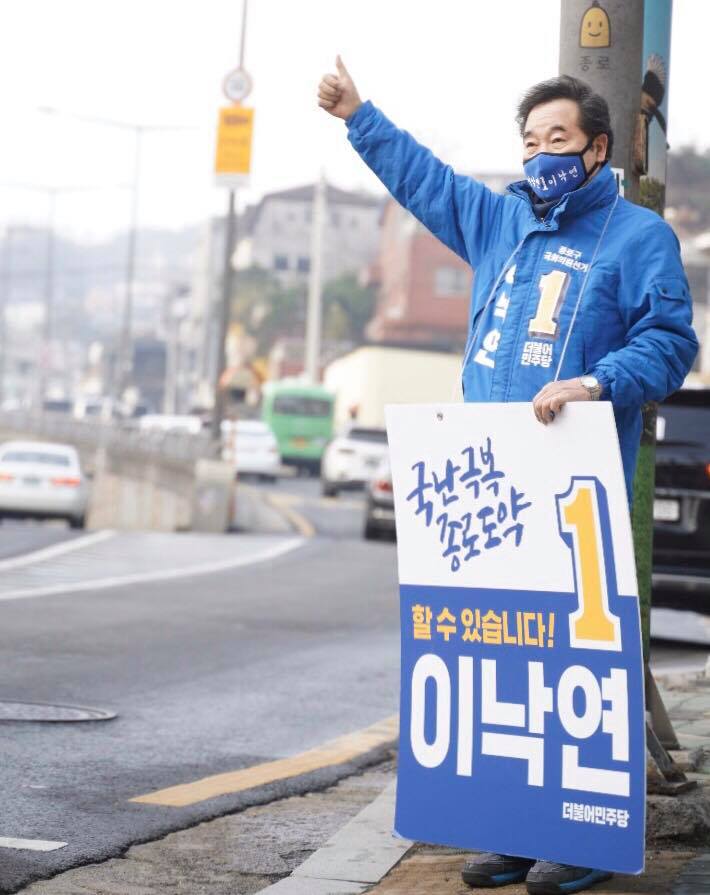 Photo from Lee Nak-yeon/ Facebook
Photo from Lee Nak-yeon/ Facebook
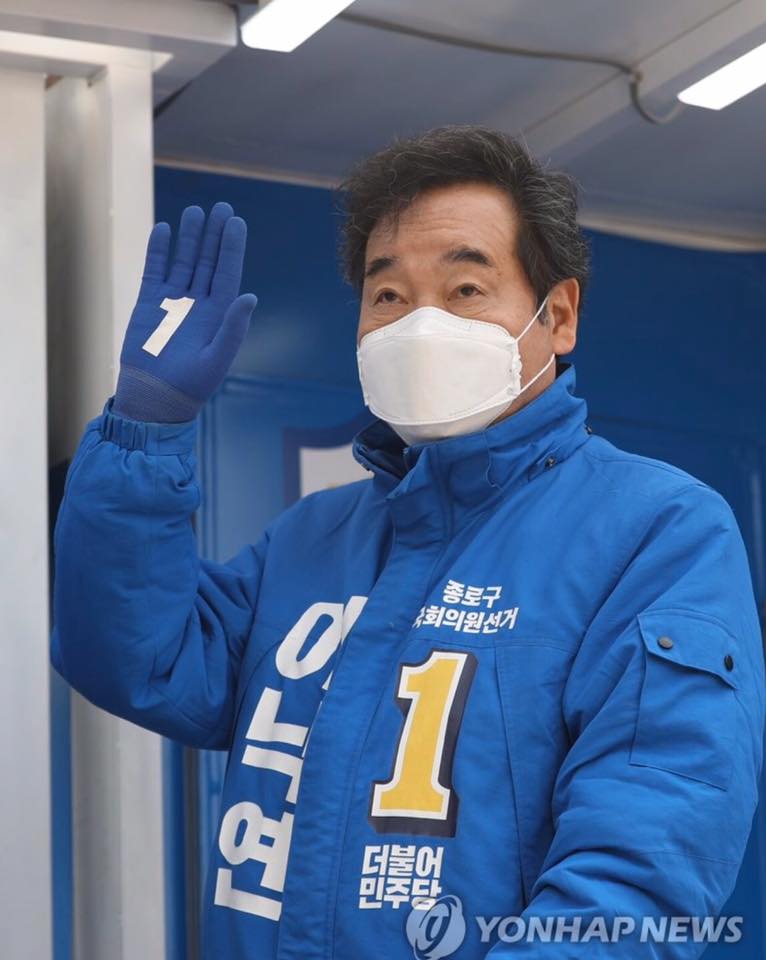 Photo from Lee Nak-yeon/ Facebook
Photo from Lee Nak-yeon/ Facebook
Another popular stunt that some candidates opted for was to disinfect the streets - a very tangible way to show their battle against the hottest topic of the season.
Minor opposition politician Dr Ahn Cheol-soo, a medical doctor, took it one step further by volunteering his medical services at the viral frontlines in Daegu.
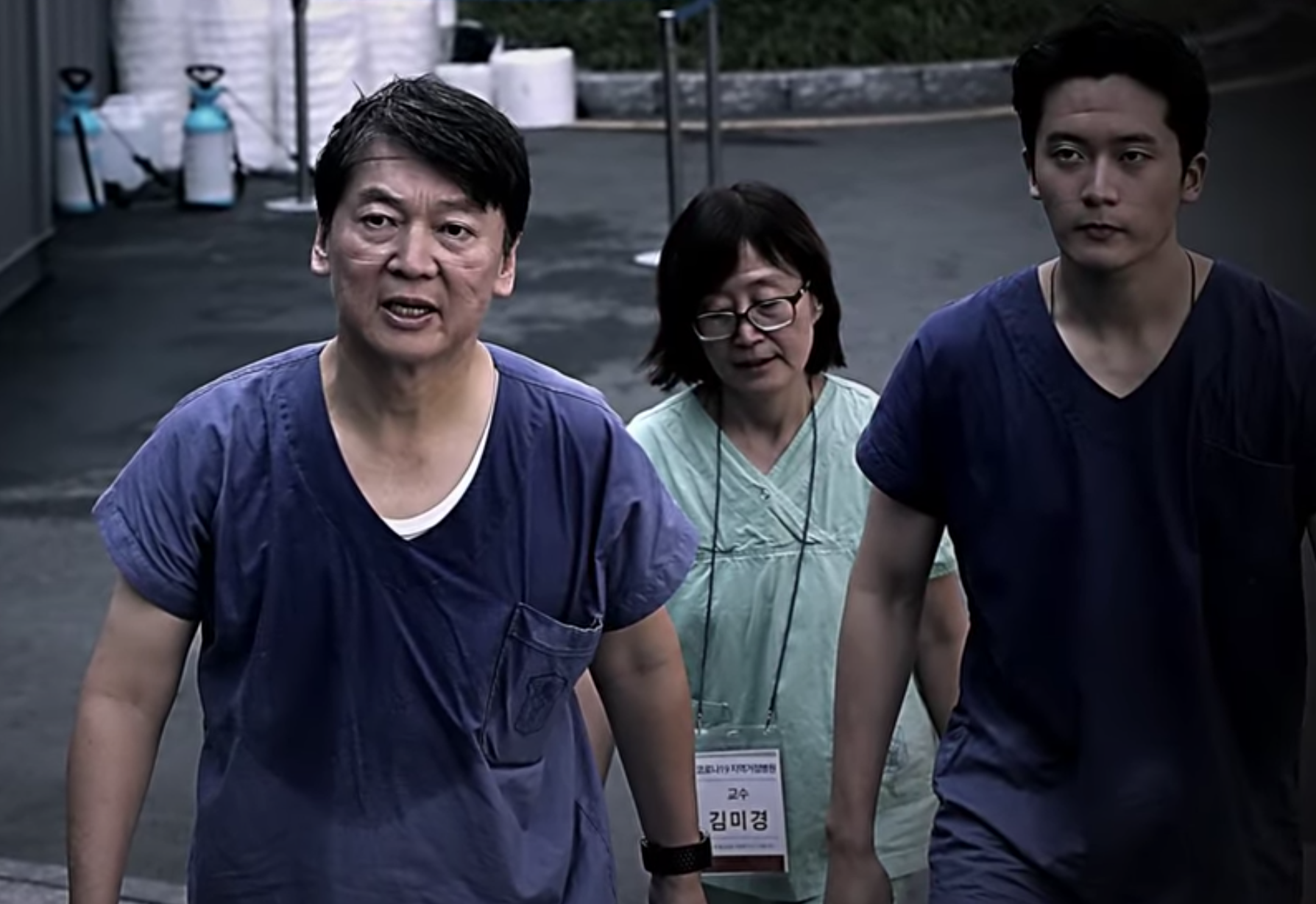 Screenshot from Ahn Cheol-soo/YouTube
Screenshot from Ahn Cheol-soo/YouTube
Other politicians, such as the ruling party's Park Kyung-Mi, turned to social media to spread their cause, publishing their rally speeches and dance moves on YouTube, Facebook and Twitter.
Polling Day
With the campaigns over, the next biggest public health headache would be settling the manpower and the logistics for the actual voting day.
Voters were funnelled into three categories: The general public, people who were quarantined due to Covid-19, and overseas voters.
General public
According to BBC, a total of 550,000 staff marked queue lines and disinfected about 14,000 voting booths all around the country.
Voters' temperatures would be taken and those found to have a fever would be escorted to vote in a designated area.
Anyone who did not wear a mask was turned away.
According to Yonhap News, voters also had to sanitise their hands and wear disposable plastic gloves as an added layer of protection. This also meant that fingerprint checks were abandoned for this general election.
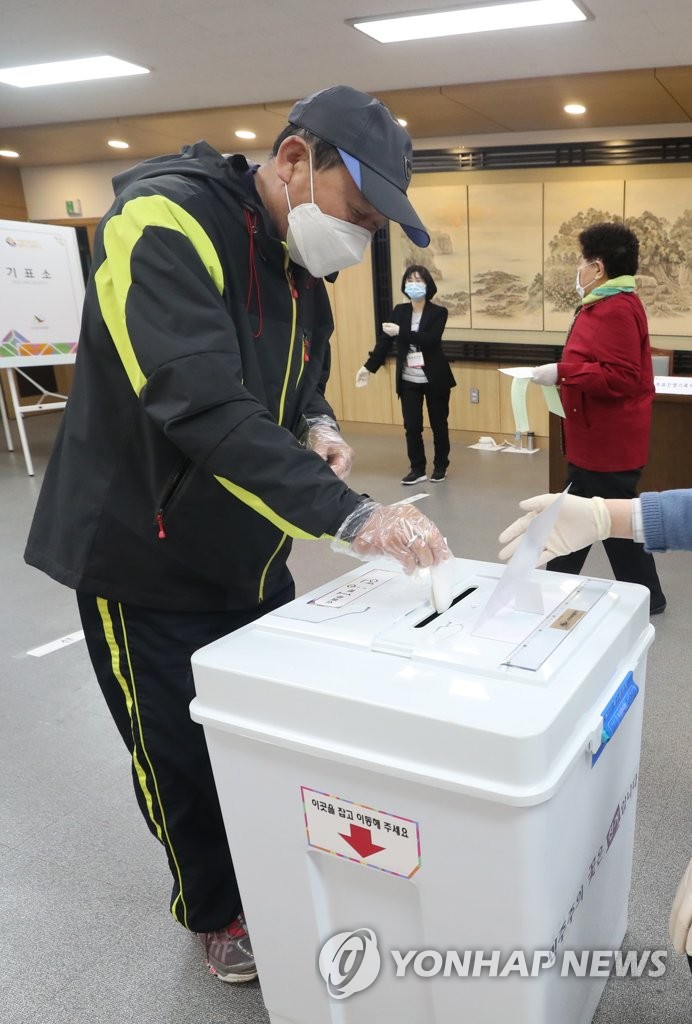 Photo via Yonhap News Agency
Photo via Yonhap News Agency
Persons in quarantine or treated for Covid-19
South Korea decided that those who were infected with the virus should vote, and made special provisions for all 60,000 under quarantine to be able to cast their ballots, reported BBC.
Patients who were being treated for Covid-19 were given the option of mailing in their ballot. Those with mild symptoms could vote ahead of time.
Those who chose to vote in person were only allowed to vote in the evening, and could not ride on public transport. They had to walk to the voting station or use their own car.
Voting stations were also placed outside quarantine and care facilities, and voting staff would be in full protective garb.
Overseas voters
More than 87,000 Koreans located in high-risk areas such as the U.S. and Europe were unable to vote, according to CNA.
This was because South Korea does not allow mail ballots for those overseas.
Encouraging turnout
Lowering the voting age to 18 years old for the first time might have helped to increase voter turnout, according to BBC.
Despite the lingering fear of Covid-19, South Korea managed to achieve a voter turnout of 66.2%, their highest in 28 years.
Allkpop also reported that K-pop stars such as TWICE and IU also encouraged the public to vote, posting pictures of themselves outside polling stations or of their hands stamped with indelible ink.
Biggest win
The ruling party won 180 out of 300 seats in Parliament - the biggest win ever in the history of South Korea's elections.
Though initially criticised for economic sluggishness and weak progress in diplomatic relations with North Korea, South Korean's President Moon Jae-in's government has been given a fresh mandate from its people for its effective handling of the Covid-19 crisis.
Foreign Policy's analysis suggests that one reason for the opposition party's crushing defeat was its fixation on criticising the ruling party's Covid-19 efforts, while not offering an alternative solution on their end, nor giving the ruling party credit where credit was due.
While it may have swayed some voters early on, the opposition's argument fell apart as South Korea began to win international accolades for its testing and handling of the virus situation. The number of diagnosed cases had also been on a steady decrease all the way to polling day.
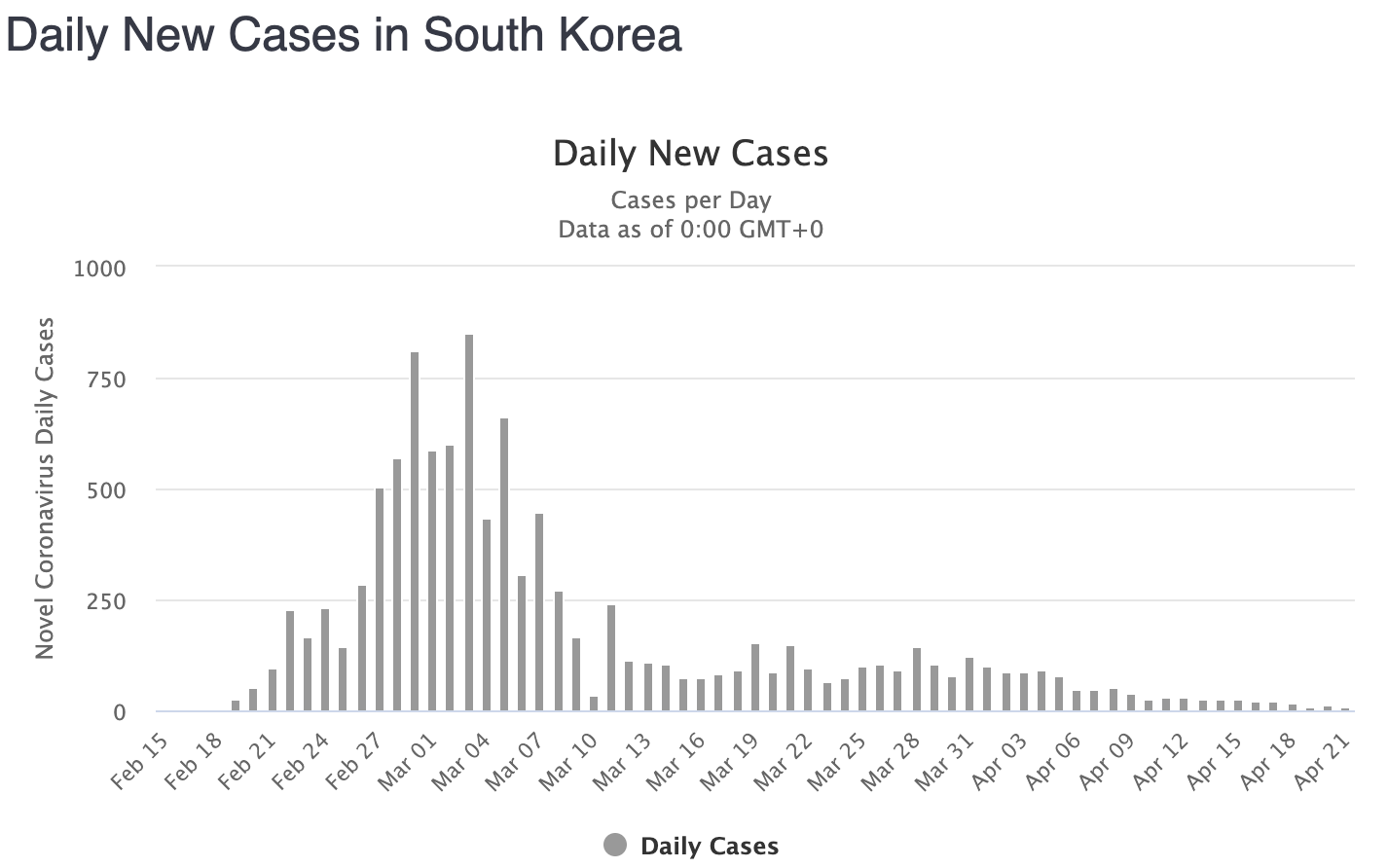 Histogram of South Korea's daily new cases taken from Worldometers
Histogram of South Korea's daily new cases taken from Worldometers
Analysts also say that in the time of corona, the public would prefer to see cooperation between parties to combat the virus, rather than conflict.
Photo by Jong Hyun Kim/Anadolu Agency via Getty Images and AllKpop
If you like what you read, follow us on Facebook, Instagram, Twitter and Telegram to get the latest updates.
